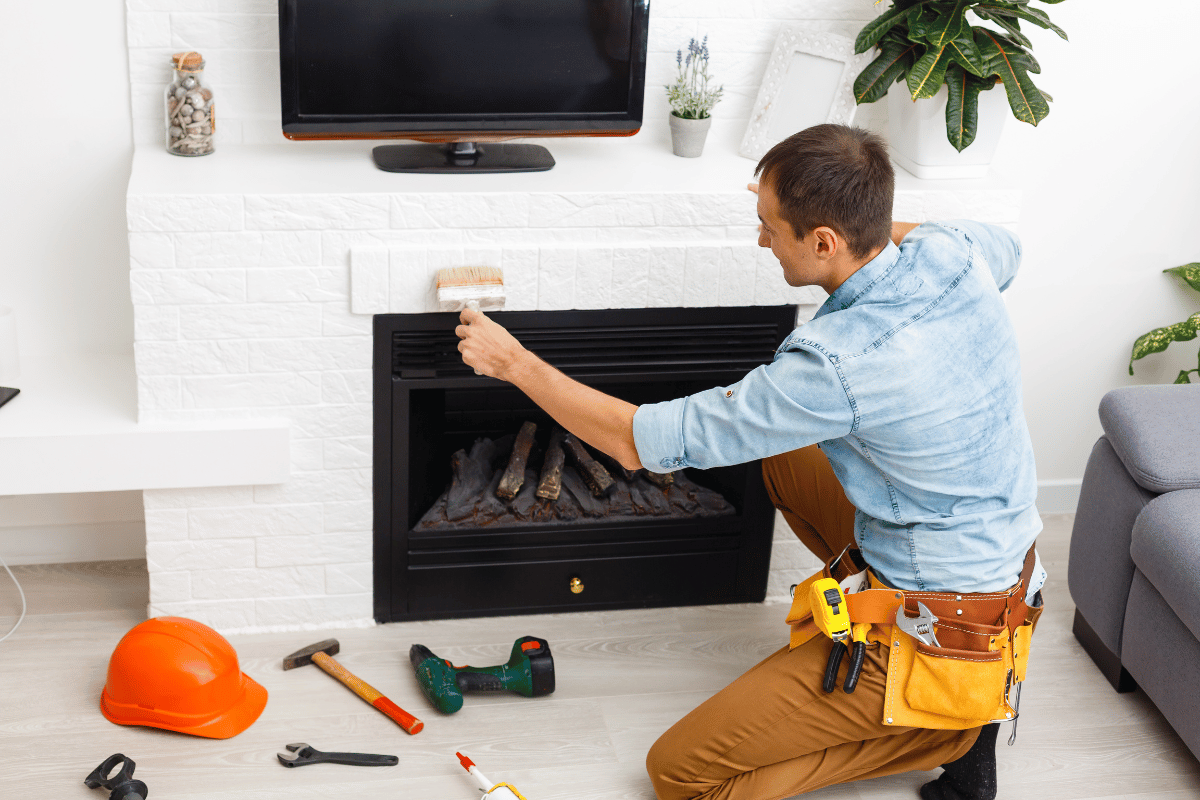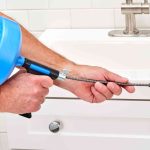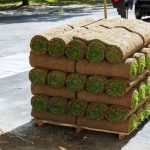There’s nothing quite like the cozy warmth of a crackling fire on a cold winter night. But after months of use, your fireplace bricks can become coated in soot and grime, losing their charm and potentially posing safety risks. Cleaning your fireplace bricks isn’t just about aesthetics—it’s about maintaining efficiency, preventing fire hazards, and ensuring your fireplace remains a safe and inviting centerpiece in your home. In this guide, we’ll walk you through everything you need to know to clean your fireplace bricks like a pro, sharing expert tips, personal anecdotes, and unique insights along the way.
Why Clean Fireplace Bricks?
Before diving into the cleaning process, let’s talk about why it’s so important to keep your fireplace bricks clean:
- Improved Efficiency: Soot buildup acts as an insulator, trapping heat inside the fireplace instead of radiating it into your home. This means your fireplace has to work harder, using more fuel to produce the same amount of warmth.
- Fire Safety: Soot is highly flammable. Excessive buildup increases the risk of a stray ember igniting the soot and causing a chimney fire.
- Chimney Health: Persistent soot buildup can extend into the chimney flue, creating blockages that restrict proper ventilation and increase the risk of carbon monoxide buildup.
- Aesthetic Appeal: Clean bricks enhance the beauty of your fireplace, making it a focal point in your home rather than an eyesore.
Personal Anecdote: Last winter, I noticed my fireplace wasn’t heating the room as effectively as it used to. After cleaning the bricks, I was amazed at how much better it performed—and how much cozier my living room felt!
Here’s a table summarizing the key steps and tips for cleaning fireplace bricks to help readers easily understand the process:
| Step | Action | Tips & Notes |
|---|---|---|
| 1. Prepare the Area | Lay down a drop cloth and put on safety gear (dust mask, goggles, gloves). | Protect your floors and yourself from dust and cleaning solutions. |
| 2. Remove Loose Debris | Use a vacuum cleaner with a brush attachment to remove loose dust and soot. | This makes the cleaning process easier and more effective. |
| 3. Test Cleaning Solution | Apply a small amount of cleaner to an inconspicuous area to check for damage. | Ensure the cleaner won’t harm your bricks. |
| 4. Clean the Bricks | Apply the chosen cleaner (baking soda paste, vinegar solution, or TSP) to a small section. | Work in small sections to prevent the cleaner from drying on the bricks. |
| 5. Scrub the Bricks | Use a stiff-bristled brush to scrub the bricks, focusing on crevices and mortar lines. | Be gentle but firm to avoid damaging the bricks. |
| 6. Rinse Thoroughly | Rinse the cleaned area with clean water and a sponge. | Remove all traces of cleaner to prevent streaks or damage. |
| 7. Spot Treatment | For stubborn stains, apply a paste of baking soda or cream of tartar and scrub with a toothbrush. | Let the paste sit for 10 minutes before scrubbing. |
| 8. Dry the Bricks | Allow the bricks to air dry completely. Use a clean, dry cloth to speed up the process. | Ensure the bricks are fully dry before using the fireplace. |
Cleaning Solutions Comparison
| Cleaner | Best For | Pros | Cons |
|---|---|---|---|
| Baking Soda Paste | Light to moderate soot buildup. | Gentle, eco-friendly, and effective. | May require extra scrubbing for stubborn stains. |
| Vinegar Solution | Light soot buildup. | Natural, non-toxic, and easy to use. | Avoid using on painted or older bricks. |
| Cream of Tartar Paste | Moderate soot buildup. | Slightly more abrasive than baking soda. | Requires thorough rinsing. |
| Trisodium Phosphate (TSP) | Heavy soot buildup. | Powerful and effective for tough grime. | Requires protective gear and proper ventilation. |
Maintenance Tips
| Tip | Action | Why It’s Important |
|---|---|---|
| Regular Cleaning | Clean your fireplace bricks at least once a year. | Prevents heavy soot buildup and maintains efficiency. |
| Burn Quality Wood | Use seasoned hardwood for less smoke and soot. | Reduces soot accumulation and improves fireplace performance. |
| Flue Maintenance | Have your chimney inspected and cleaned annually. | Prevents blockages and ensures proper ventilation. |
| Store Firewood Properly | Keep firewood in a dry, covered area. | Prevents moisture buildup, which leads to more smoke and creosote. |
Safety Precautions
| Precaution | Action | Why It’s Important |
|---|---|---|
| Wear Protective Gear | Use a dust mask, goggles, and gloves. | Protects you from dust, soot, and cleaning chemicals. |
| Ensure Ventilation | Open windows or doors when using chemical cleaners like TSP. | Prevents inhalation of harmful fumes. |
| Test Cleaners First | Apply cleaner to a small, inconspicuous area before full application. | Ensures the cleaner won’t damage your bricks. |
What You’ll Need: Your Cleaning Arsenal
Before you start, gather the following supplies:
- Safety Gear: Dust mask, safety goggles, and heavy-duty gloves.
- Drop Cloth: To protect your floors from debris and cleaning solutions.
- Cleaning Solutions: Choose from natural options like baking soda, vinegar, or cream of tartar or chemical cleaners like trisodium phosphate (TSP) for heavy buildup.
- Scrubbing Tools: Stiff-bristled brush, soft-bristled brush, sponges, and cloths.
- Bucket: For mixing cleaning solutions and rinsing tools.
- Vacuum Cleaner: Optional, but helpful for removing loose dust and debris.
Choosing the Right Cleaning Solution
The type of cleaner you use depends on the severity of the soot buildup.
Here’s a breakdown of your options:
1. Natural Cleaners for Light to Moderate Buildup
- Baking Soda and Dish Soap Paste: Mix 3 tablespoons of dish soap with ½ cup of baking soda to form a paste. This gentle yet effective solution is perfect for light soot.
- Vinegar Solution: Mix equal parts white vinegar and water in a spray bottle. Vinegar’s mild acidity cuts through soot without damaging bricks.
- Cream of Tartar Paste: Combine 2 tablespoons of cream of tartar with a little water to create a paste. This natural abrasive is great for moderate buildup.
Expert Tip: Avoid using vinegar on painted bricks or bricks older than 20 years, as the acidity can cause damage.
2. Chemical Cleaners for Heavy Buildup
- Trisodium Phosphate (TSP): A powerful cleaner for tough grime. Use with caution—wear protective gear and ensure proper ventilation. Always follow the manufacturer’s instructions.
Personal Anecdote: My friend once used TSP to clean her heavily soiled fireplace. While it worked wonders, she learned the hard way that proper ventilation is a must—she ended up airing out her house for hours!
Step-by-Step Cleaning Guide
1. Prepare the Area
- Lay down a drop cloth to protect your floors.
- Put on your safety gear (dust mask, goggles, and gloves).
- Use a vacuum cleaner with a brush attachment to remove loose dust and debris.
2. Test Your Cleaning Solution
- Apply a small amount of your chosen cleaner to an inconspicuous area to ensure it doesn’t damage the bricks.
3. Clean the Bricks
- Light Buildup: Apply your natural cleaner (baking soda paste, vinegar solution, or cream of tartar paste) to a small section of bricks. Let it sit for 10 minutes, then scrub with a stiff-bristled brush. Rinse thoroughly with water.
- Moderate Buildup: Use cream of tartar paste for a slightly more abrasive clean. Follow the same process as above.
- Heavy Buildup: For stubborn soot, use TSP. Dilute it according to the instructions, apply it to a small area, scrub, and rinse thoroughly.
Pro Tip: Work in small sections to prevent the cleaner from drying on the bricks.
4. Spot Treatment for Stubborn Stains
- Create a paste of baking soda or cream of tartar with a small amount of water.
- Apply the paste directly to the stain, let it sit for 10 minutes, and scrub with a toothbrush or small scrub brush.
- Rinse the area thoroughly.
5. Dry the Bricks
- Allow the bricks to air dry completely. You can use a clean, dry cloth to speed up the process.
Maintaining Your Clean Fireplace
Once your fireplace is sparkling clean, follow these tips to keep it that way:
- Regular Cleaning: Schedule cleanings based on how often you use your fireplace. A yearly cleaning is recommended for occasional use, while more frequent cleanings may be necessary for heavy use.
- Burn Quality Wood: Use seasoned hardwood, which produces less smoke and soot.
- Flue Maintenance: Have your chimney inspected and cleaned by a professional at least once a year.
- Store Firewood Properly: Keep your firewood in a dry, covered area to prevent moisture buildup, which can lead to increased smoke and creosote formation.
Personal Anecdote: After cleaning my fireplace, I started storing my firewood in a covered area. The difference was noticeable—my fireplace stayed cleaner, and I used less wood to achieve the same warmth.
Unique Insights: Beyond the Basics
1. The Science of Soot
Soot is a byproduct of incomplete combustion. It’s made up of tiny carbon particles that can adhere to surfaces and create a stubborn, greasy film. Understanding this helps explain why certain cleaners (like vinegar or baking soda) are effective—they break down the carbon particles and dissolve the grease.
2. The Role of Mortar
Mortar, the material between bricks, is porous and can absorb soot and stains. When cleaning, pay special attention to mortar lines, as they often require extra scrubbing.
3. Environmental Impact of Cleaning Solutions
Natural cleaners like baking soda and vinegar are eco-friendly and safe for your home. Chemical cleaners like TSP, while effective, should be used sparingly due to their environmental impact.
Expert Tips for a Sparkling Fireplace
- Use a Toothbrush for Tight Spaces: A toothbrush is perfect for cleaning crevices and mortar lines.
- Avoid Harsh Scrubbing: Scrubbing too hard can damage the bricks. Use a gentle but firm touch.
- Rinse Thoroughly: Residual cleaner can leave streaks or damage the bricks over time. Always rinse thoroughly with clean water.
- Seal the Bricks: After cleaning, consider applying a brick sealer to protect the surface and make future cleanings easier.
Conclusion: Enjoy a Clean, Safe, and Beautiful Fireplace
Cleaning your fireplace bricks may seem like a daunting task, but with the right tools and techniques, it’s a manageable and rewarding project. Not only will your fireplace look better, but it will also function more efficiently and safely.
By following this guide, you’ll be able to tackle soot and grime with confidence, ensuring your fireplace remains a cozy and inviting centerpiece in your home. So grab your cleaning supplies, roll up your sleeves, and get ready to enjoy the warmth and beauty of a clean fireplace!








